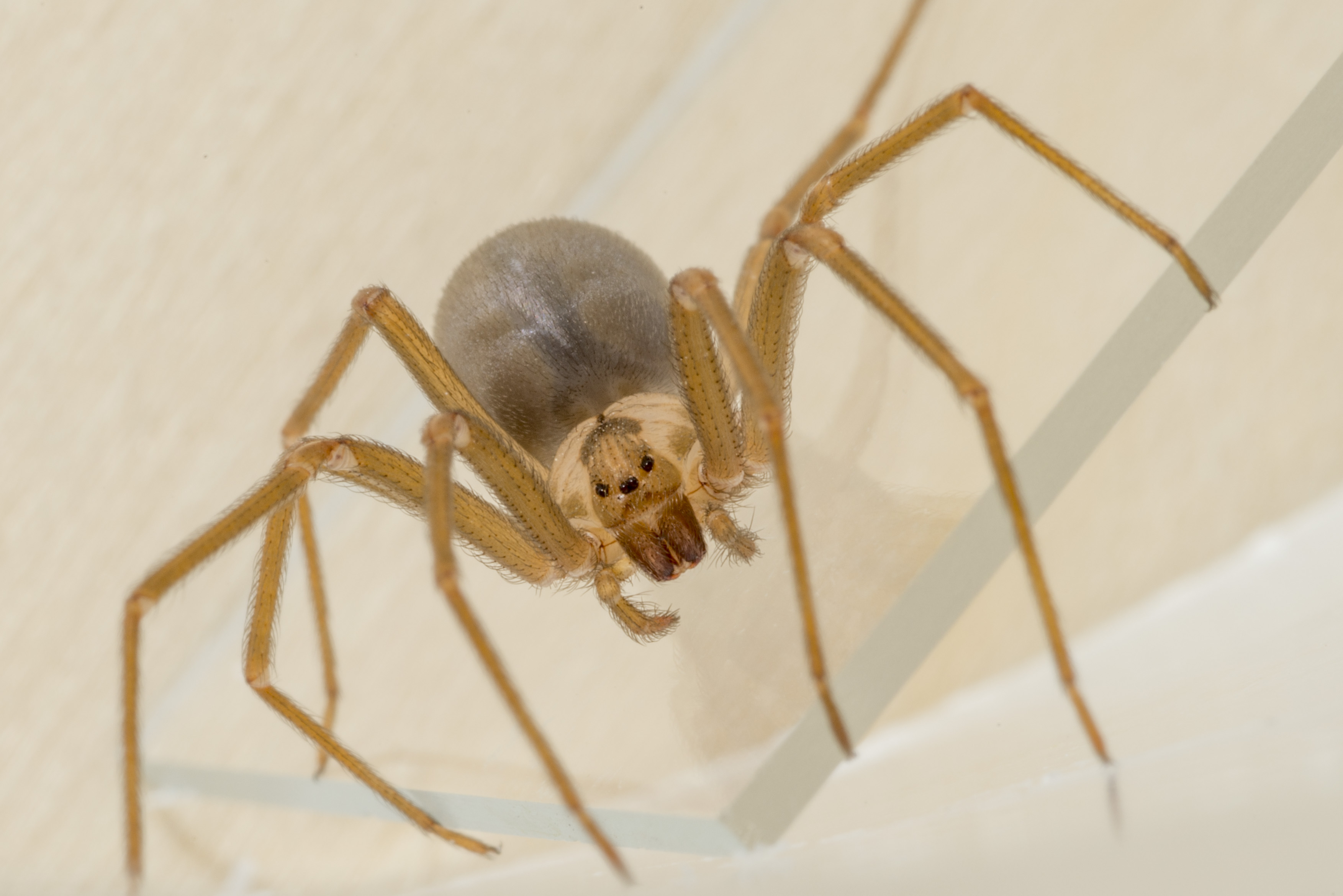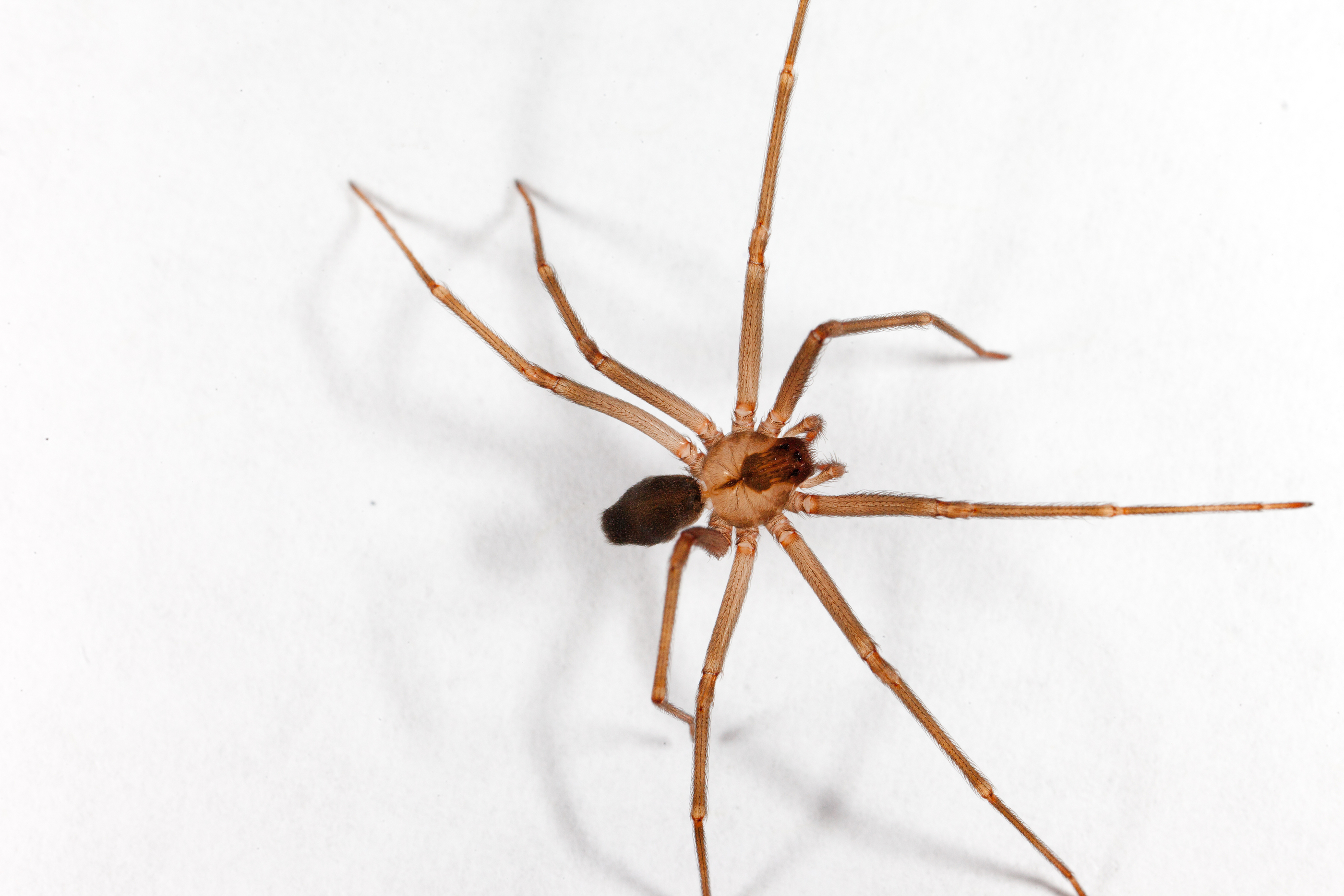Table Of Content

Although brown recluse spider bites are rare, the venom can sometimes cause serious wounds and infestations should be taken seriously. If you or someone you know may have experienced a brown recluse bite, it is important to always seek medical attention. If you are dealing with brown recluse spider problems on your property, contact your local spider exterminators. For humans, one of the most significant differences between the recluse and house spider is the amount of danger they pose. Bites not always immediately painful, although a negative response by the victim's body is evident in noticeable skin damage around the wound. The bitten area may become itchy or irritated before painful skin damage develops from exposure to the venom.
Orb weaver spiders
Necrotic arachnidism is a condition that can potentially occur when a person is bit by a spider that has venom that causes tissue to die. Brown recluse spiders live in very specific parts of the south-central United States. The spiders are called “recluses” because they are hard to find even in the places where they live. As we grow older, it’s a great time to reevaluate our choices and habits. In this article, we’ll explore 18 things you may still be doing even though you may be too old. In severe reactions, the bite can create a volcano lesion, where the damaged tissue becomes gangrenous, leaving an open wound, which can take eight weeks or more to recover from.
What Does a Brown Recluse Spider Bite Look Like?
Both spider species have a similar lifespan, typically ranging from one to two years. They reproduce by laying eggs, but their egg sacs and mating behaviors can vary. If there is more than one color on the legs, or if the legs are brown or darker, it is NOT a recluse. If the spider has more than one pigment on the abdomen, it is NOT a recluse. They are can be determined to be NOT recluses by more than one color on their legs or abdomens.
You Be the Judge: Brown Recluse on the Loose - The Saturday Evening Post
You Be the Judge: Brown Recluse on the Loose.
Posted: Thu, 16 Jul 2020 07:00:00 GMT [source]
How to Tell If You Were Bitten by a Brown Recluse Spider
Their six eyes are white in color and located on the tip of the cephalothorax in three rows. Their cephalothorax is gray to white, maybe even a pale amber color. They have eight eyes arranged as a single pair in front and three parallel rows of larger eyes. Barn funnel weavers have a flattened cephalothorax, straight abdomen, and an elongated body. Their webs are often found in dark and dry areas, such as inside furniture, in basements, or storage boxes. The cephalothorax, or head space, is the portion of the spider where the legs attach.
Venomous brown recluse spider may be in Michigan to stay - Detroit Free Press
Venomous brown recluse spider may be in Michigan to stay.
Posted: Sun, 30 Apr 2017 07:00:00 GMT [source]
Here are the things that describe a brown recluse spider (but some other spiders have a few of these characters too). Concerns about the presence of spiders in homes can also stem from a lack of understanding about their behavior and habits. Both the Brown Recluse Spider and the House Spider are reclusive creatures that prefer dark, undisturbed areas. Keeping your home clean and clutter-free can help reduce the likelihood of spider infestations.
Spider Webs & Behavior
In some cases, what a person thinks is a spider bite is actually another type of necrotic skin infection, such as necrotizing fasciitis. Skin infections like this can be much more dangerous than a spider bite. The bump might also be mistaken for a skin infection due to Staphylococcus or Streptococcus. At the same time, these bacteria can infect the spider bite wound. You cannot be sure a spider is a brown recluse based only on what the eyes look like. However, if the eyes are not in the proper pattern, then it’s definitely not a brown recluse.

When facing a threat, they prefer to back out instead of lashing out. The bite site swells and itches after three to eight hours, and the swelling may persist for as long as three weeks. Occasionally, the wound can develop a bluish necrotic lesion with a pale center, surrounded by reddish skin. The lesion can grow and expand for several months, leaving a deep scar.
Brown Recluse Spider Vs House Spider
A female southern house spider can grow to 0.74 inches (19mm) in body length with males being slightly smaller at 0.39 inches (10mm) in body length. In nature, recluses are found in cracks and crevices in and under rocks or the loose bark of dead trees. Recluses benefit from human-altered environments, where they are readily found under trash cans, plywood, tarps, rubber tires, and storage boxes. “This is one of the few species of spider that can be dangerous to people,” says Potzler.

Brown recluses find shelter in secluded areas of human locales, like in storages, garages, closets, and sheds. They prefer dry and empty areas and build their home with disorderly woven webs. To keep your home spider-free, be proactive in preventing both house spiders and brown recluses from invading your living space.
For spider bite victims, their skin could develop deep and painful lesions that eat away at the surface of their skin. If you have dusty bookshelves, nooks, and crannies that barely see the light of day, house spiders could use these spots as their new webbed homes. Many toxins in the brown recluse’s venom can cause serious health issues in humans when bitten. Medical research says that the two chemicals found in the venom, Sphingomyelinase D and Hyaluronidase, can lead to skin damage, nausea, and pain. Male and female house spiders spend long times together on the same web.
In dire times, these spiders also perform autotomy, where they sever their own limbs to escape from their predators’ hold or venom. Unlike some spiders, their severed body parts do not regenerate later. After hatching, the spiderlings stay close to their mother for some time within the web. The pattern might attract attention, but it is not a distinctive feature of the species. Other spiders, like the Cellar Spiders and the Pirate Spiders, also have similar patterns. Brown Recluse Spiders (Loxosceles reclusa) is a species of spiders that are shy and reclusive, and very venomous.
When symptoms become severe enough to require medical care, it's because the bite has become infected or caused what's known as loxoscelism. Other spider species might have eight eyes, or six eyes arranged in two triads (groups of three). Brown recluses like dark, dingy places where they can hide under things. They are known to build their nests in attics, storage rooms, inside furniture and closets, and in other dry, dark, and warm spaces in homes and buildings. Being able to quickly identify the brown recluse can ensure you receive the proper medical treatment you need. The brown recluse is not an aggressive spider and will try and flee rather than be aggressive towards a human.
Brown recluse spiders also have longer and thinner legs compared to house spiders. Brown recluse spiders are slightly larger than house spiders, with a body length ranging from 1/4 to 1/2 inch. They have a distinctive violin-shaped marking on the top of their cephalothorax, and their legs are long and thin. Brown recluse spiders are typically light to medium brown in color. They prefer dark, secluded areas, such as closets, attics, or basements.
They also do not have a conspicuous spine, and these features are very consistent among all mature adult brown recluses. Their legs are slanted, their body resides low, and their legs bend to make them angle up pointedly. Other spiders that look like brown recluses have spines and or spikes and patterns on their legs but not this one. The venom contains neurotoxins, but those are mild enough that they are believed not to be very dangerous to humans. The nickname of the house spider might be the American house spider, but it’s the brown recluse spider that primarily lives in the United States.
Your garden spiders, and learn how to entice more into your yard. Here we will discuss the key differences between these two arachnids to help you identify them and understand their behaviors. If the spider has conspicuous thick spines on the legs, it is NOT a recluse. This orb weaver below has many spines sticking out perpendicularly from the legs. [update 2021] Below is an updated range map based on the latest data, made by Matt Bertone. For more information about recluse spiders, check out our Recluse or Not?
This is the dead giveaway, provided you are close enough to the spider to count its eyes. Below are some 8-eyed spiders that are sometimes mistaken for brown recluses. As more people become aware of the benefits of spiders in controlling pests, there has been a growing interest in adopting environmentally-friendly pest control methods. This trend has led to a shift away from chemical pesticides towards natural alternatives that are safer for both humans and the environment. Pay attention specifically to its cephalothorax, where it should have three brown stripes.

No comments:
Post a Comment